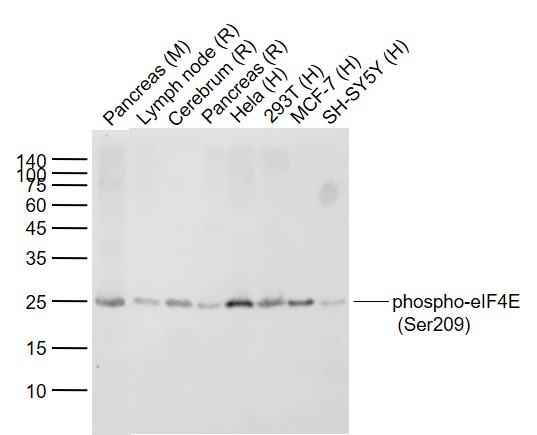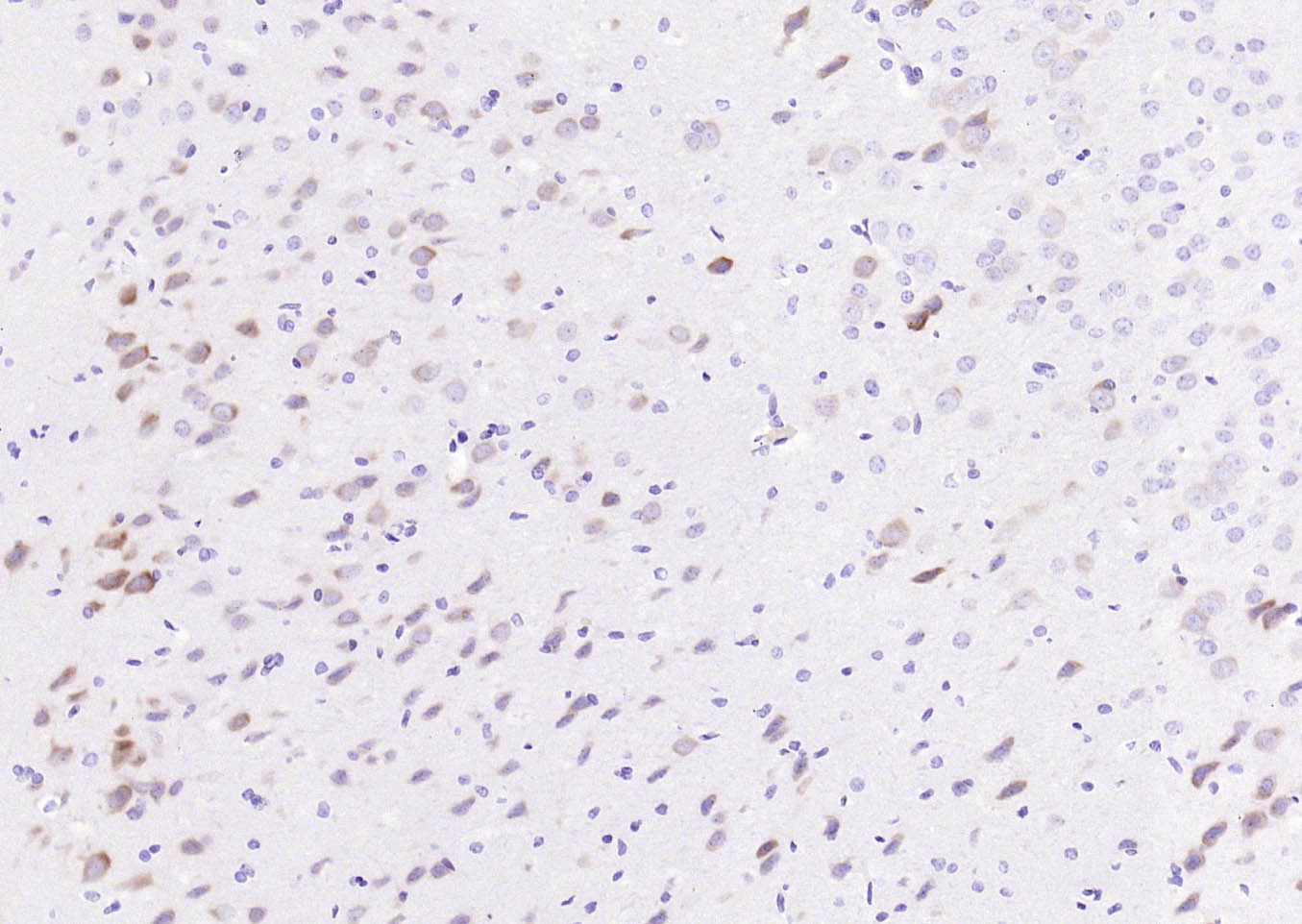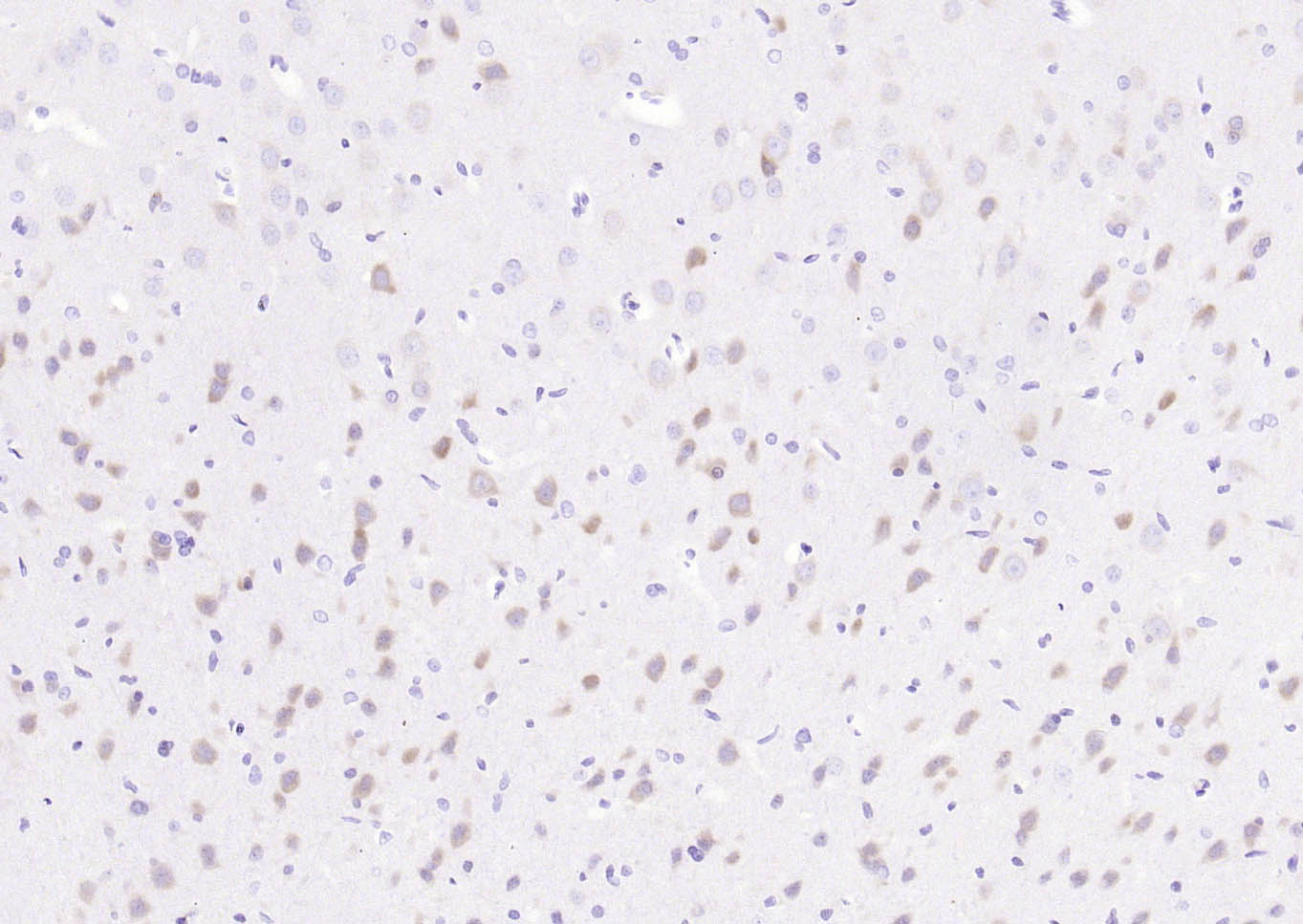
Rabbit Anti-phospho-eIF4E (Ser209)antibody
eIF4E(S209); eIF4E(phospho S209); eIF4E(phospho Ser209); p-eIF4E(Ser209); EIF4F; eIF-4E; eIF 4E; CBP; eIF 4F 25 kDa subunit; CBP; eIF 4E; eIF 4F 25 kDa subunit; EIF 4F; EIF4E1; EIF4EL1; EIF4F; Eukaryotic Translation Initiation Factor 4 E; Eukaryotic trans
View History [Clear]
Details
Product Name phospho-eIF4E (Ser209) Chinese Name 磷酸化真核翻译起始因子4ERecombinant rabbit monoclonal anti Alias eIF4E(S209); eIF4E(phospho S209); eIF4E(phospho Ser209); p-eIF4E(Ser209); EIF4F; eIF-4E; eIF 4E; CBP; eIF 4F 25 kDa subunit; CBP; eIF 4E; eIF 4F 25 kDa subunit; EIF 4F; EIF4E1; EIF4EL1; EIF4F; Eukaryotic Translation Initiation Factor 4 E; Eukaryotic translation initiation factor 4E like 1; Messanger RNA Cap Binding Protein eIF 4E; IF4E_HUMAN. literatures Product Type Phosphorylated anti Recombinant rabbit monoclonal anti Research Area Tumour immunology Signal transduction Apoptosis Immunogen Species Rabbit Clonality Monoclonal Clone NO. 2B1 React Species Human, Mouse, Rat, (predicted: Chicken, Dog, Pig, Cow, Horse, Rabbit, ) Applications WB=1:500-2000 IHC-P=1:50-200 IHC-F=1:50-200 ICC=1:50-200 IF=1:50-200 (Paraffin sections need antigen repair)
not yet tested in other applications.
optimal dilutions/concentrations should be determined by the end user.Theoretical molecular weight 24kDa Cellular localization The nucleus Form Liquid Concentration 1mg/ml immunogen KLH conjugated Synthesised phosphopeptide derived from human eIF4E around the phosphorylation site of Ser209: SG(p-S)TT Lsotype IgG Purification affinity purified by Protein A Buffer Solution 0.01M TBS(pH7.4) with 1% BSA, 0.03% Proclin300 and 50% Glycerol. Storage Shipped at 4℃. Store at -20 °C for one year. Avoid repeated freeze/thaw cycles. Attention This product as supplied is intended for research use only, not for use in human, therapeutic or diagnostic applications. PubMed PubMed Product Detail eIF4E, a protein modulates translation of maternal mRNAs in early embryos before the onset of zygotic transcription. eIF4E also influences the overall rate of translation. eIF4E binds to the 7 methyl GTP cap structure of eukaryotic mRNAs. Phosphorylation of eIF4E on serine 209 regulates the affinity of this protein for the 7 methyl GTP cap and/or RNA. Phosphorylation also enhances the interaction of eIF4E with eIF4G, which form a complex known as eIF4F. eIF4E phosphorylation is correlated with increased translational rate in a number of cell types. Several kinases are currently being investigated as potential regulators of eIF4E including PKC and/or the MAP kinase activated Mnk.
Function:
Its translation stimulation activity is repressed by binding to the complex CYFIP1-FMR1. Recognizes and binds the 7-methylguanosine-containing mRNA cap during an early step in the initiation of protein synthesis and facilitates ribosome binding by inducing the unwinding of the mRNAs secondary structures. Component of the CYFIP1-EIF4E-FMR1 complex which binds to the mRNA cap and mediates translational repression. In the CYFIP1-EIF4E-FMR1 complex this subunit mediates the binding to the mRNA cap.
Subunit:
eIF4F is a multi-subunit complex, the composition of which varies with external and internal environmental conditions. It is composed of at least EIF4A, EIF4E and EIF4G1/EIF4G3. EIF4E is also known to interact with other partners. The interaction with EIF4ENIF1 mediates the import into the nucleus. Nonphosphorylated EIF4EBP1, EIF4EBP2 and EIF4EBP3 compete with EIF4G1/EIF4G3 to interact with EIF4E; insulin stimulated MAP-kinase (MAPK1 and MAPK3) phosphorylation of EIF4EBP1 causes dissociation of the complex allowing EIF4G1/EIF4G3 to bind and consequent initiation of translation. Rapamycin can attenuate insulin stimulation, mediated by FKBPs. Interacts mutually exclusive with EIF4A1 or EIF4A2. Interacts with NGDN and PIWIL2. Component of the CYFIP1-EIF4E-FMR1 complex composed of CYFIP, EIF4E and FMR1. Interacts directly with CYFIP1 (By similarity). Interacts with Lassa virus Z protein. Binds to MKNK2 in nucleus. Interacts with LIMD1, WTIP and AJUBA.
Subcellular Location:
Cytoplasm, P-body.
Post-translational modifications:
Phosphorylation increases the ability of the protein to bind to mRNA caps and to form the eIF4F complex.
Similarity:
Belongs to the eukaryotic initiation factor 4E family.
SWISS:
P06730
Gene ID:
1977
Database links:Entrez Gene: 1977 Human
Entrez Gene: 13684 Mouse
Omim: 133440 Human
SwissProt: P06730 Human
SwissProt: P63073 Mouse
Unigene: 249718 Human
Unigene: 3941 Mouse
Unigene: 11275 Rat
Product Picture
Lane 1: Pancreas (Mouse) Lysate at 40 ug
Lane 2: Lymph node (Rat) Lysate at 40 ug
Lane 3: Cerebrum (Rat) Lysate at 40 ug
Lane 4: Pancreas (Rat) Lysate at 40 ug
Lane 5: Hela (Human) Cell Lysate at 30 ug
Lane 6: 293T (Human) Cell Lysate at 30 ug
Lane 7: MCF-7 (Human) Cell Lysate at 30 ug
Lane 8: SH-SY5Y (Human) Cell Lysate at 30 ug
Primary:
Anti-phospho-eIF4E (Ser209) (SLM-52152R) at 1/1000 dilution
Secondary: IRDye800CW Goat Anti-Rabbit IgG at 1/20000 dilution
Predicted band size: 27 kD
Observed band size: 25 kD
Paraformaldehyde-fixed, paraffin embedded (rat brain); Antigen retrieval by boiling in sodium citrate buffer (pH6.0) for 15min; Block endogenous peroxidase by 3% hydrogen peroxide for 20 minutes; Blocking buffer (normal goat serum) at 37°C for 30min; Antibody incubation with (phospho-eIF4E (Ser209)) Monoclonal Antibody, Unconjugated (SLM-52152R) at 1:200 overnight at 4°C, followed by operating according to SP Kit(Rabbit) (sp-0023) instructionsand DAB staining.Paraformaldehyde-fixed, paraffin embedded (mouse brain); Antigen retrieval by boiling in sodium citrate buffer (pH6.0) for 15min; Block endogenous peroxidase by 3% hydrogen peroxide for 20 minutes; Blocking buffer (normal goat serum) at 37°C for 30min; Antibody incubation with (phospho-eIF4E (Ser209)) Monoclonal Antibody, Unconjugated (SLM-52152R) at 1:200 overnight at 4°C, followed by operating according to SP Kit(Rabbit) (sp-0023) instructionsand DAB staining.
Bought notes(bought amounts latest0)
No one bought this product
User Comment(Total0User Comment Num)
- No comment






 +86 571 56623320
+86 571 56623320
 +86 18668110335
+86 18668110335

